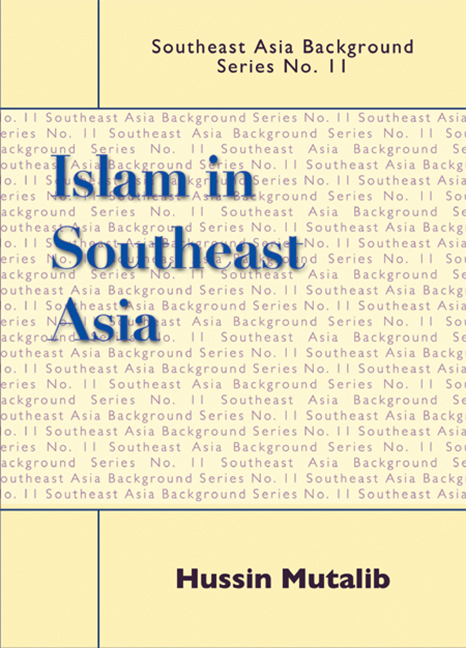Book contents
6 - Thailand and Philippines
Published online by Cambridge University Press: 21 October 2015
Summary
The issues facing the Muslim minorities in Thailand and the Philippines are, in some ways, quite similar. In both countries, Muslims constitute a relatively small population of about 5 to 7 per cent of the total population, are geographically located in the poorer southern part of the country, are proud of their identity and civilization, and have been struggling for some form of autonomy from the central government, without success, for many years. Historical neglect, low socio-economic status, religious antagonism, and violent separatist uprisings that have cost thousands of lives, all combined to explain the continuing plight of minority Muslims in these two countries, a plight not shared by other Muslim minorities in other parts of Southeast Asia.
MUSLIMS IN THAILAND
Thai Muslims have had a long history, stretching a few centuries, ever since the kingdom of Patani became a center of Islam around the late fourteenth century. In the seventeenth century, the success of Persian Muslim traders caught the attention of the Thai king, Pracau Songtham (1602–27) who appointed Muslims as some of his advisers. The fall of Muslim Patani to the Siamese monarch in 1789 led to the ethnic and religious segmentation of Thai Muslims, vis-à-vis the Thai nation (Che Man 1990; Kettani 1986).
At a time when all Thais were subjected to a common citizenship and to the official Thai religion of Theravada Buddhism, Muslims in the south, constituting about 7 per cent of the total Thai population of about 65 million, were clamouring for autonomy in matters of Islam and Malay culture. What ensued was decades of tension and conflict with the Thai state, which adopted an assimilationist policy in dealing with the “Muslim problem”, especially in the four southern provinces where Muslims are in the majority: Patani, Yala, Satun and Narathiwat.
The close proximity of these provinces to Malaysia — where the Muslim majority generally empathize with the plight of their Thai brethren — accentuates the tension.
- Type
- Chapter
- Information
- Islam in Southeast Asia , pp. 59 - 70Publisher: ISEAS–Yusof Ishak InstitutePrint publication year: 2008



